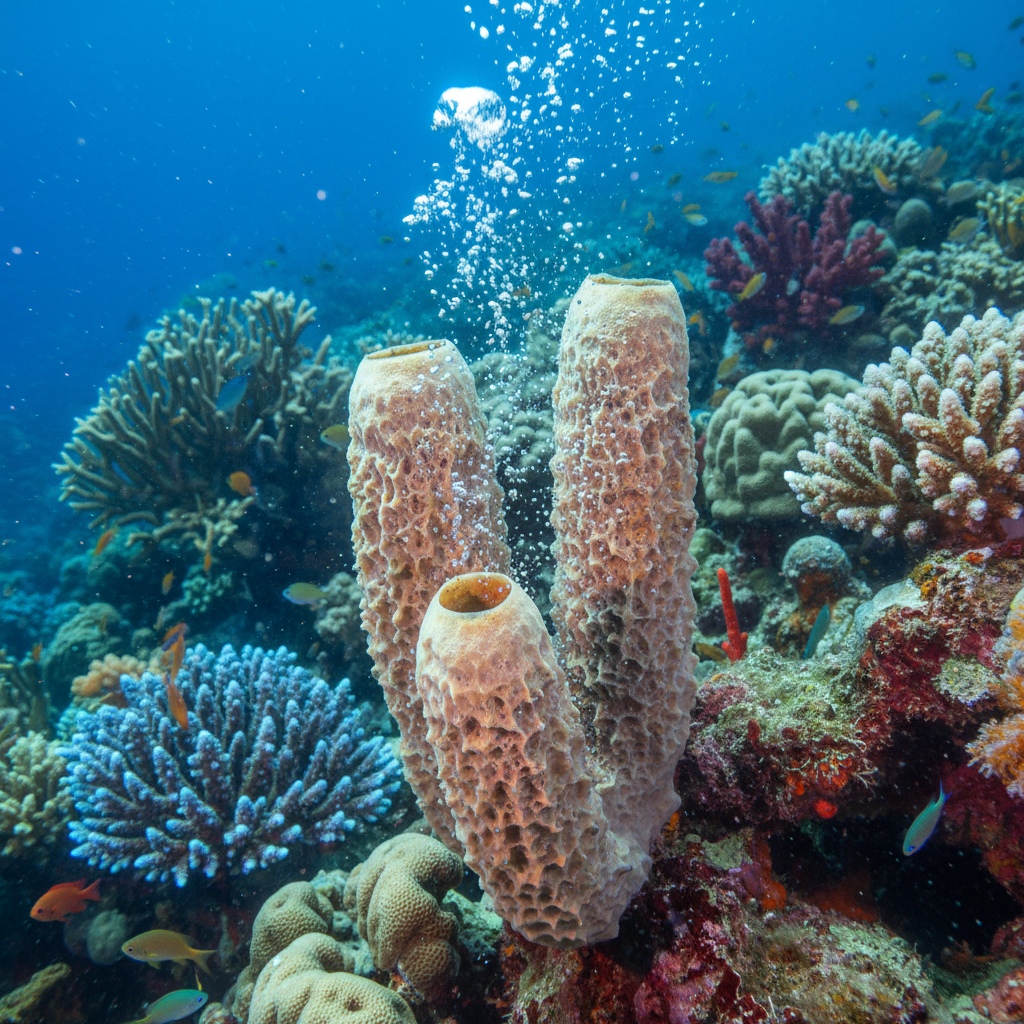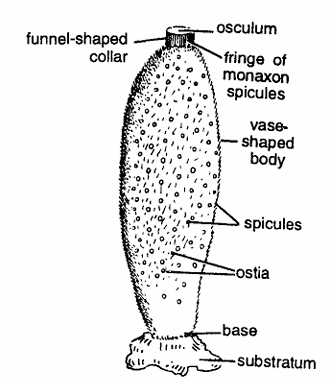Habit and habitat
Sycon or Scypha is a small, solitary or colonial marine sponge found in shallow to approximately 60 fathoms deep in well oxygenated water.
Distribution
Common in Europe. Distributed from Rhode Island to Greenland.
General Characterstics
- Complex vase-shaped body, measuring 20 to 25 mm in length and 5 to 6 mm in diameter.
- Each cylinder bulges in the middle and opens to the exterior by osculum.
- Body surface is covered by a ostia bearing membrane.
- At the distal free end there is a large osculum, encircled by a fringe of large giant monaxon spicules forming funnel-shaped collar or oscular fringe.
- Proximal and or base attached to substratum.
- Body wall is thick through which monaxon, triaxon and tetraxon spicules project.
- Body wall is composed of outer dermal epithelium, middle mesenchyma and inner flattened epithelium lining spongocoel which opens through the osculum.
- Canal system is syconoid. Choanocytes are restricted to radial canals.
- Course of water current is ostia – prosopyles – radial – canals -apopyles -spongocoel -osculum – exterior.
- Nutrition, respiration and excretion by canal system.
- Hermaphroditic.
- Reproduction by sexual or asexual methods. Asexual reproduction by budding and regeneration, while sexual by ova and sperms.
- Larva is amphiblastula.

Identification
Since the animal has radial tubes, oscular fringe, ostia and all above features, hence it is Sycon.

